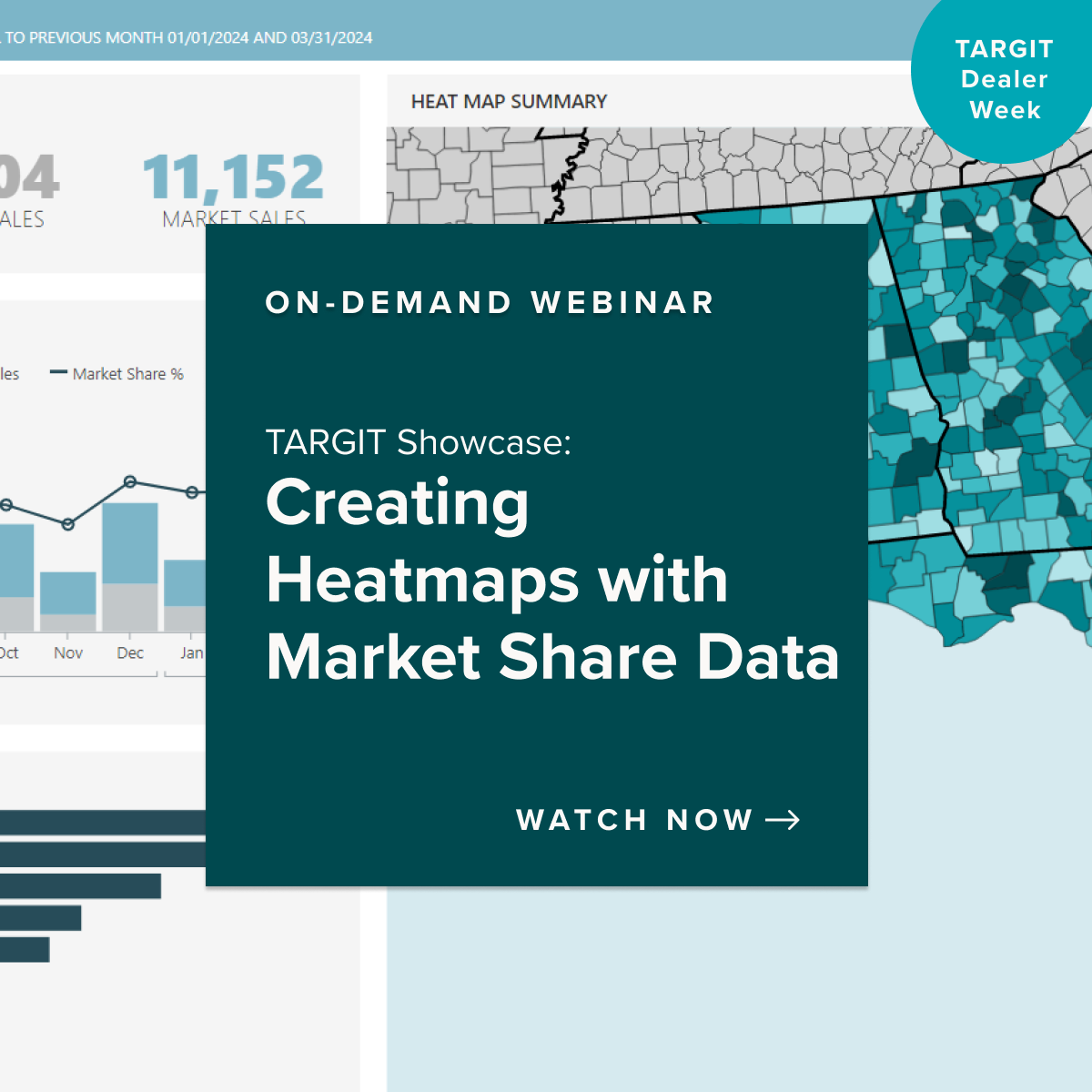Creating a Data-Driven Marketing Strategy
When Sarah Venta became Lift Solutions' Sales and Marketing Coordinator, one of her first goals was to create a marketing plan that would give the company a clear direction for where to focus its resources to generate the best returns.
To do this, she needed to calculate the forklift dealership’s market share and analyze more detailed information about their penetration, open opportunities, and sales coverage in each territory. Sarah explains that, rather than taking a blanketed, high-level approach to the market, she wanted to focus Lift Solutions’ sales and marketing efforts on the territories with the most potential.
“It’s really valuable to know where you can go to get those strategic wins,” Sarah shares. “If you can pinpoint where the business is and measure your performance in those target counties, you can confidently set your compass for the year.”
Developing Dynamic Heatmaps in TARGIT
When it came time to nail down the details of her new marketing plan, Sarah turned to the business intelligence (BI) solution that Lift Solutions already relied on to create reports and measure performance in all other business areas: TARGIT Decision Suite.
Sarah collaborated with TARGIT’s consulting team to generate custom analyses that combine market share data from the ITA with internal financial, sales, and marketing data that reflects the dealership’s performance in various territories and across each of its product lines.
The results of these analyses are presented as heatmaps that give Sarah and her team a county-level view of penetration, opportunities, and market share. The maps give Lift Solutions a clear picture of where they are performing best and where they have the most growth potential. They can use this information to prioritize specific sales plays and build targeted marketing campaigns for prospects with the highest likelihood of making a purchase.
They also help Sarah see which counties have adequate sales coverage and where capacity needs to be better balanced to ensure the dealership is tending to its prospects without overstaffing a specific region.
“When I look at a heatmap in TARGIT, it tells me where to go, but also where not to go,” says Sarah. “These insights help ensure that we don't waste our resources in places with very little potential revenue. They tell us where to focus to get the maximum return.”

Sharing Progress and Market Insights With Manufacturers
While Sarah herself draws a lot of insight from these heatmaps, they’re also an essential tool for the leadership team at Lift Solutions.
Executives bring the latest heatmaps to presentations with equipment manufacturers to give them insight into how the dealership is currently performing and its plans for the coming months.
“We are a dealer for three different forklift manufacturers. We use these heatmaps to show them where we are excelling and how we want to grow our business.”
Sarah emphasizes that while territory mapping on this scale is not yet a standard for material handling equipment dealers, there is a growing interest from manufacturers in this type of data. As the market becomes more competitive, the heatmaps position Lift Solutions as a highly valuable partner.
“The heatmaps we create in TARGIT allow us to show that we’re being proactive in our market and continuously working to maximize our return and the return of our manufacturers. TARGIT gives us a quantitative way to prove that we’re being good partners to the manufacturers we represent.”
Targeting Specific Accounts With Product-Level Analyses
In the future, Sarah hopes to use TARGIT heatmaps to analyze even more granular information and use the results to develop targeted promotions for specific product lines.
“Once we have access to the right data from our manufacturers, we would like to create targeted promotions based on new stock coming into our dealership.”
For example, Lift Solutions plans to eventually create heatmaps that categorize prospects by industry in each county, allowing the sales and marketing teams to determine which class of truck they would be most likely to purchase, and match that back to incoming stock.
This analysis would give the dealership the ability to target customers based on up-to-date insight into their purchasing habits and operational needs.





